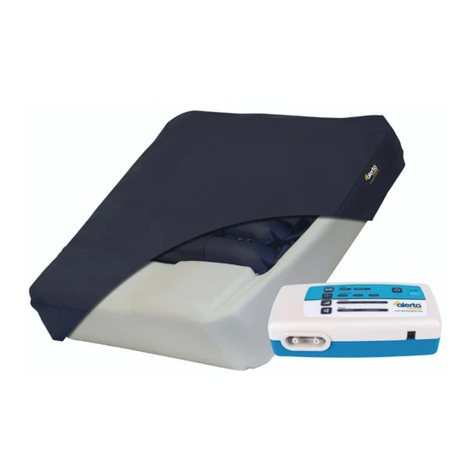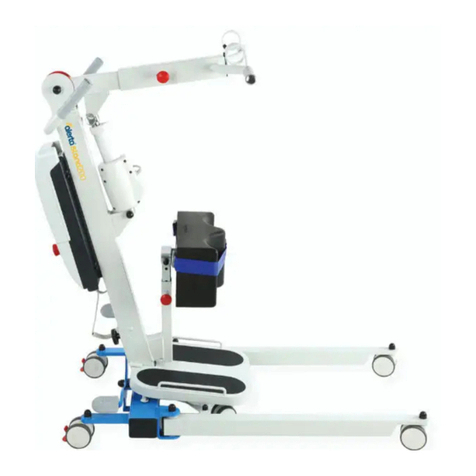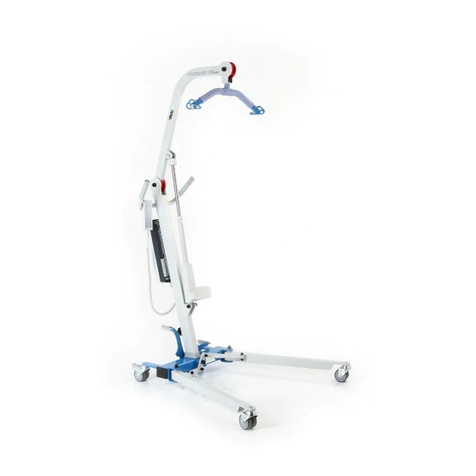
www.alertamedical.com
PAGE 04
2. Safety precautions
Any person using or assembling these items
must first read and understand the assembly,
operating and cleaning instructions provided.
Read all safety information contained in this
manual (highlighted with the symbol )
carefully. Failure to follow these instructions
may result in damage to property and/or
personal injury.
2.1 Recommendations
Familiarise yourself with the safety controls
and devices before operating the hoist. Use a
sling that is CE marked and check that its size
and other characteristics are appropriate to
the patient. Do not use a sling that is frayed
or worn, and always follow the instructions
provided with it.
Check that the combined weight of the
patient and the sling does not exceed the
maximum working load displayed on the
hoist. Preferably, the patient should be as
close to the floor as possible prior to
transferring him or her.
A loaded hoist should always be used on flat,
smooth surfaces that are free of obstacles.
If moving a patient along a sloping surface,
the gradient must not be greater than 5°
and it is recommended to use the assistance
of a helper. Never leave a hoist loaded with
a patient on a sloping surface. Transfer the
patient with the hoist legs in parallel position
at a maximum speed of 3 km/h (0.8 m/s).
Keep the hoist away from water, humidity,
splashes and corrosive atmospheres (indoor
swimming pools, the sea, etc.). Do not use the
electric hoist in the shower or recharge the
battery in the bathroom.
Do not force the safety controls and devices.
Do not push the mast, the boom or the
patient to move the hoist.
2.2 Braking and moving
2.3 Before moving a patient
Consider individual hazards, including:
• Risk of crushing/squeezing.
• Potential falls.
• Disturbed patients.
• Patients with learning difficulties.
• Small children and pregnant women.
• Persons without the mental capacity to
recognise unsafe behaviour.
• Unauthorised persons.
Anybody who is authorised to use the hoist
must be able to do so in a safe and controlled
way.
Due to the continuous, smooth lifting
action of the moving parts, there is risk of
entrapment. When operating these parts,
the user and/or the carer must make sure
that there are no body parts in the areas
where they may become trapped.
While the hoist is stationary, the brakes
should always be on, except when lifting
or lowering a patient. If the wheels are
free to rotate during these operations,
the hoist will find the centre of gravity of
the hoist patient unit. On the other hand,
if the wheels are locked, the patient will
be dragged to the centre of gravity of
the hoist patient unit, which will result in
discomfort.






























